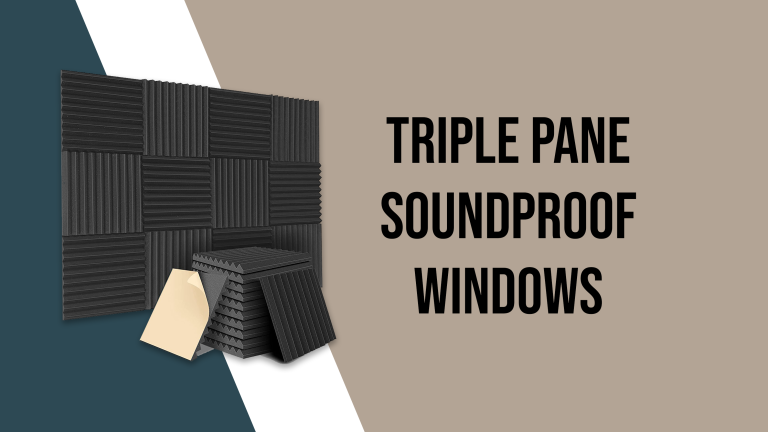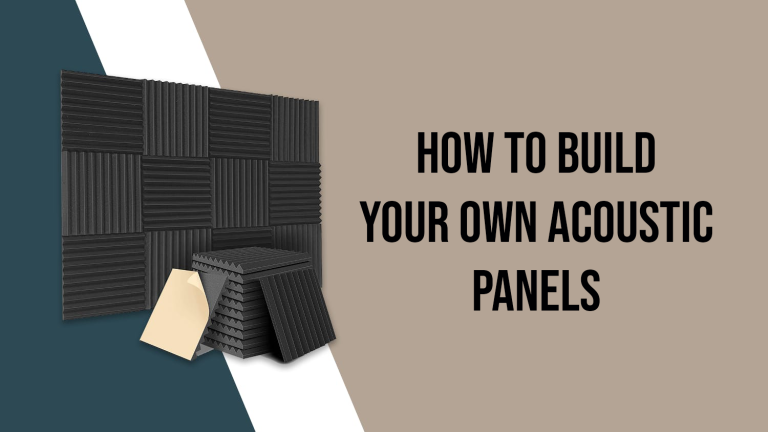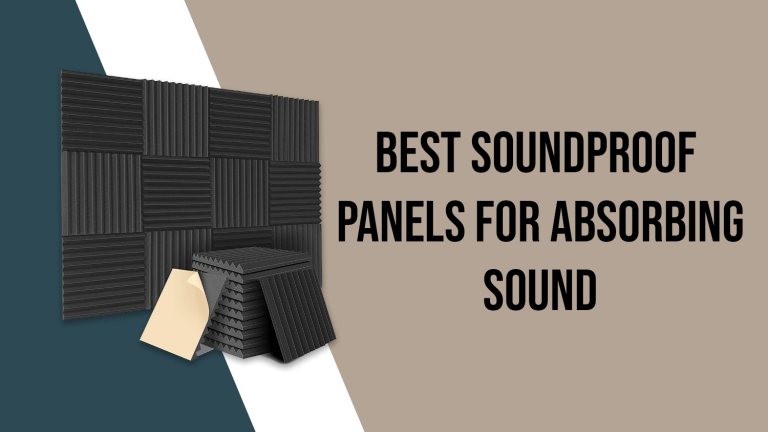How To Soundproof Hardwood Floors for Quiter Living
Do you get annoyed by all the noise from the floor above? Making your hardwood floors soundproof can make your home more peaceful and quieter.
But one problem is that they can be noisy and bother others when you walk in shoes, have conversations, and furniture move, even if you don’t have pets or kids. The great news is that you can make your hardwood floors soundproof without any problems or spending too much money.
We will guide you through the steps on how to soundproof hardwood floors effectively and you can enjoy a quieter living space.
Why Soundproof Hardwood Floors?
Before we start with the guide on how to soundproof floors, let’s explore why it’s important to soundproof your hardwood floors.
Privacy: You will have more privacy, so you won’t need to be concerned about your neighbors hearing every little thing you do.
Reduced Noise: Soundproofing makes your home quieter by reducing noise from people walking, using appliances, and talking. It’s especially helpful in buildings with multiple floors or apartments.
Improved Comfort: A quieter place can help you sleep better and create a more peaceful living area.
Increased Property Value: Soundproofing can add value to your home, making it more attractive to potential buyers.
Better Sleep: A quieter floor can result in improved sleep quality, especially if you or your family members move around during the night.
The problem with hardwood floors
When you want to know how to make hardwood floors soundproof. So here, I will tell you hardwood floors can be noisy, disturbing not just your neighbors but also making the room itself sound louder. Placing carpet on a hard floor can improve the acoustics, absorb some of the noise, and stop it from moving to the floor below. If you can, think about adding carpet and padding to your bare hardwood floor to make it quieter.
How to Soundproof Hardwood Floors?
If you have wooden floors and you want to make how to soundproof hardwood floors, you can follow some soundproof ways here and your home quieter.
Now, let’s explore some simple ways to how do you reduce sound on hardwood floors:
Rugs and Carpets: The simplest and most cost-effective method to reduce noise from hardwood floors is by using rugs and carpets.
Area Rugs: Put rugs in places where lots of people walk or where noise is a problem. These rugs block and absorb sound, so your hardwood floors do not make echoes.
Thick Padding: Use thick padding under your rugs for even more noise reduction. The thicker the padding, the better it is at absorbing sound.
Wall to Wall Carpeting: If you are ready to spend more, think about installing wall to wall carpeting. It covers the whole floor and provides a reduced noise.
Furniture Placement: Believe it or not, the arrangement of your furniture can affect how sound moves through hardwood floors.
Heavy Furniture: Put heavy furniture strategically in noisy places. The weight of these pieces helps stop vibrations and lowers how much sound moves.
Furniture Pads: Put furniture pads or coasters under chairs, tables, and other furniture legs. These pads stop the furniture from touching the floor directly, making less noise when you move them.
Underlayment: Underlayment is a material that you place between your hardwood floor and the subfloor. It can improve soundproofing.
Acoustic Underlayment: Acoustic underlayment is specifically designed for soundproofing. It comes in rolls or sheets and is made from materials like foam or rubber.
Cork Underlayment: Cork underlayment is a great option for soundproofing hardwood floors. It’s simple to install and provides effective noise reduction.
Green Glue: Green Glue is a useful product for reducing noise in your home, especially if you haven’t installed your hardwood floor yet or are open to making some adjustments. It can decrease loud sounds by up to 90% and is also suitable for walls.
Rubber Mats: If you have a workout room, playroom, or a space for pets, carpets may not be the best choice due to their high maintenance and cleaning requirements. If using Green Glue isn’t practical, think about using rubber mats instead. Rubber mats make an excellent alternative for carpets as they offer cushioning and can decrease impact noise without the need to reinstall your hardwood floor.
Heavy Curtains and Drapes: In rooms with hardwood floors, thick curtains or drapes can be a decorative feature and a way to reduce noise. They absorb sound, making the room quieter.
How to Make Different Types of Floors Quieter?
If you have floors made of wood, laminate, marble, ceramic, concrete, or stone, you can make them quieter by separating them from the building’s structure. For hardwood floors, you should create a gap of 5-10mm between the floor and the walls.
This stops vibrations from the floor and noise caused by things. If you live in an apartment or flat with finished floors, it’s important to isolate them from the walls and any supporting beams. If your floor has wooden beams under the chipboard or floorboards, it’s important to put insulation between these beams. You can do this by either cutting the chipboard or taking out the floorboards and adding special acoustic mineral wool. This step is really important to make the noise quieter.
Another effective way is to set up a floating floor. This involves using special boards with resilient layers that are typically about 40mm thick.
Can You Soundproof Wooden Flooring?
Here, you want to know can you soundproof wooden flooring. Yes, you can soundproof wooden flooring to reduce noise between floors. Soundproofing wooden floors is important in multi-story buildings and apartments where footsteps, voices, and other noises can be disruptive.
There are different methods to do this:
A common way is to put a special sound-absorbing layer under the wooden floor. This layer is designed to absorb and dampen sound vibrations, making it a great way to make things quieter. Additionally, adding area rugs or carpets on top of wooden floors can help absorb sound and minimize the sound moving through the floor.
You can also consider using soundproofing mats or floor underlayment, which you can install directly on top of your existing wooden floor to make it better at stopping noise.
What Is the Cheapest Way to Soundproof a Floor?
Most people ask what is the cheapest way to soundproof a floor. Here is a simple answer, if you want a budget-friendly way to soundproof your floor, there are many affordable choices. One of the most cost-effective methods is using rugs or carpets. You can place them strategically to soak up sound and lower noise. Thick, soft carpets work especially well for reducing noise.
Another affordable option is to use foam or rubber floor underlayment. These materials can be relatively inexpensive and can help minimize the impact of footsteps and other noises. You can also add weather stripping or door sweeps around doors to stop sound from seeping through gaps.
What Is the Best Sound Insulation for Wood Floors?
If you are asking for the answer to what is the best sound insulation for wooden floors? I will tell you about it for the most effective sound insulation for wood floors, think about using acoustic underlayment designed specifically for this job. Acoustic underlayment is made from materials that are best at reducing sound vibrations. You can install it under hardwood, laminate, or engineered wood flooring to get the best sound insulation.
On the other hand, if you are after a more robust soundproofing option and are more to invest, think about MLV or cork underlayment. MLV is a heavy material that’s excellent at stopping sound from moving through. Cork underlayment not only offers impressive sound insulation but is also environmentally friendly and adds thermal insulation.
Materials and Tools:
To get started with soundproofing your hardwood floors, collect these materials and tools:
Materials
Acoustic Underlayment: This is the main soundproofing material and will be placed under your hardwood floor.
Glue: Used to secure the underlayment to the subfloor.
Foam Mats or Rugs: You can place these on the hardwood floors surface to make noise reduction even better.
Tools
Utility Knife: For cutting the underlayment and adhesive.
Measuring Tape: To measure the floor area accurately.
A screwdriver, Hammer, Nails or screws, Staple gun or adhesive and heavy duty scissors will be also required.
Now that you have all you require, let’s go through the step-by-step process.
Step 1: Prepare the Area
Before you start soundproofing, ensure the floor is clean, dry, and free of any debris. Take out any furniture or items in the room to create a clear working area.
Step 2: Measure and Cut the Underlayment
Measure the Room: Use your measuring tape to measure the dimensions of the room. Be sure to consider any small spaces and corners.
Cut the Underlayment: Roll out the acoustic underlayment and cut it to fit the room’s dimensions. Keep a little space around the edges to let it expand if needed.
Step 3: Apply Soundproofing Adhesive
Mix the Adhesive: Follow the manufacturer’s instructions to mix the soundproofing adhesive.
Spread the Adhesive: Using a trowel, spread a thin and even layer of adhesive on the subfloor.
Lay the Underlayment: Carefully place the cut acoustic underlayment onto the adhesive. Push it down hard to ensure it sticks securely.
Seal the Edges: Apply adhesive tape to seal the seams and edges of the underlayment, making a solid barrier.
Step 4: Install Foam Mats or Rugs
If you want additional soundproofing or want to improve the room’s decor, consider adding foam mats or rugs on top of your hardwood floor. These soft materials can absorb sound and reduce echoing.
Step 5: Reinstall Furniture
Once the adhesive has dried, you can move your furniture back into the room. Make sure to place felt pads under furniture legs to prevent any potential damage to the hardwood floor.
Maintenance and Additional Tips
Regular Cleaning: Keep your hardwood floor and any mats or rugs clean to maintain their soundproofing effectiveness.
Area Rugs: If you are not using foam mats or rugs, think about putting area rugs in busy spots to add more noise reduction.
Check for Gaps: Regularly check the underlayment and adhesive for any gaps or damage, and fix them as needed.
Consult a Professional: If you are unsure about soundproofing, it’s a good idea to consult a professional advisor or installer who can provide expert guidance.
Conclusion
Soundproofing your hardwood floors does not have to be a complicated process. With the right materials and tools, you can reduce noise and create a quieter, more comfortable living space. By following our easy guide on how to soundproof hardwood floors, you will be able to enjoy the benefits of soundproofed hardwood floors.
Related Article: Silence Your Space with Soundproof Windows Inserts
FAQs
What Type of Flooring Is Best for Soundproofing?
The top choices for soundproof flooring are carpet and cork, which are well known for their sound-absorbing qualities. Moreover, materials like Green Glue and rubber mats used as underlayment can also help reduce noise.
Can You Completely Soundproof a Floor?
Achieving complete soundproofing for a floor is the most challenging task. However, you can reduce noise through different methods such as adding carpet, using Green Glue, or strategically placing rubber mats in high-traffic areas.
Does Soundproofing Increase Home Value?
While soundproofing improvements can make your home more attractive to buyers seeking a quieter living space, they may not directly increase your home’s overall value.








